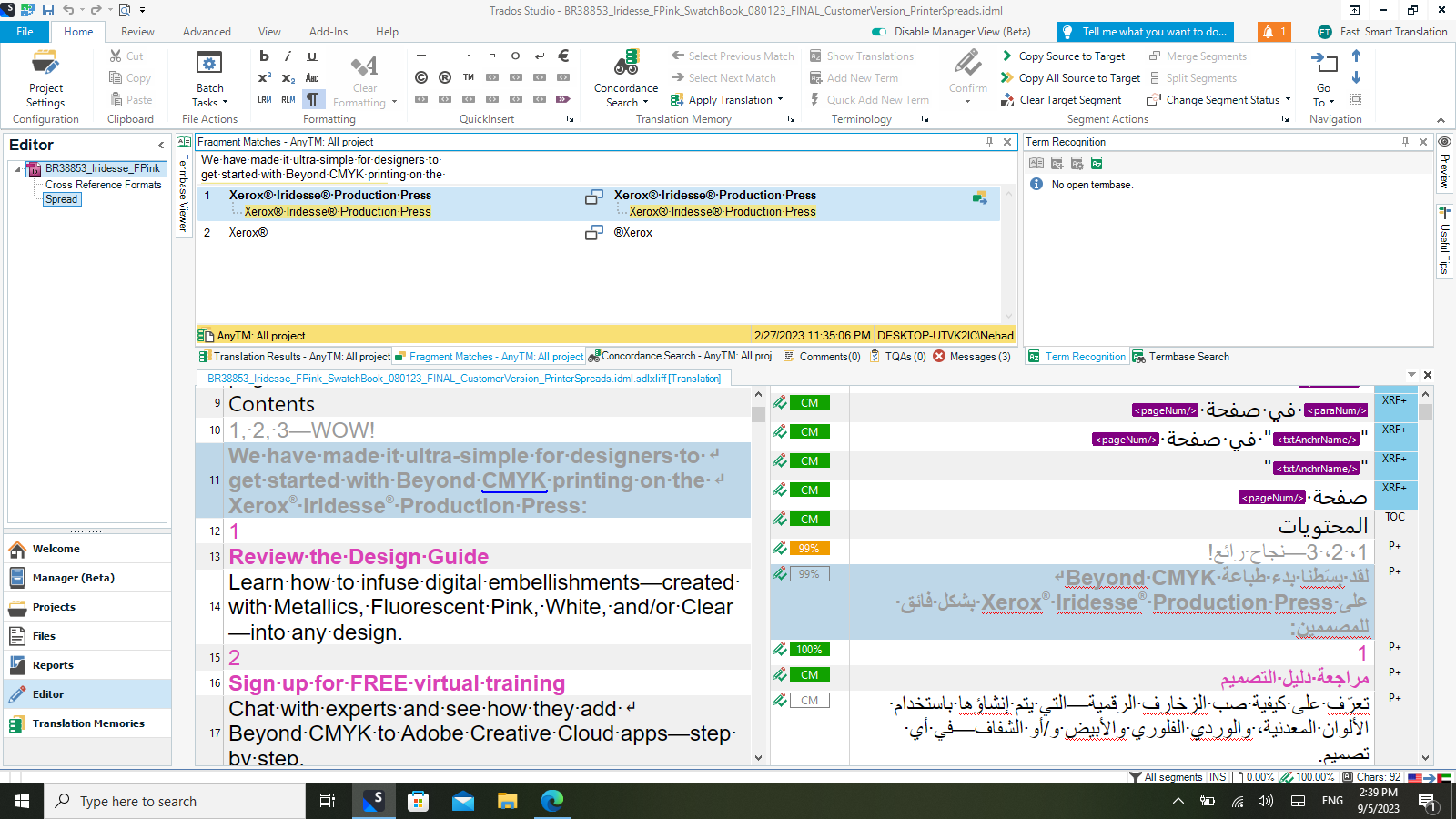
RWS Trados Studio: Complete Buyer's Guide
Enterprise translation management platform for legal document consistency
RWS Trados Studio is an enterprise translation management platform that combines advanced translation memory technology with sophisticated terminology management capabilities specifically designed for legal document consistency and accuracy requirements. The platform positions itself as a comprehensive solution for mid-to-large law firms requiring precise multilingual document handling across complex legal workflows.
Market Position & Maturity
Market Standing
RWS Trados Studio operates as an established player in the enterprise translation management market, with significant market correction: SDL Trados is no longer a competitor, as SDL was acquired by RWS in 2020, making it part of RWS's product portfolio rather than a separate alternative.
Company Maturity
RWS operates as an established enterprise software vendor with comprehensive support infrastructure, including dedicated account managers and extensive training resources.
Growth Trajectory
The platform competes within a stratified market where vendors differentiate through security, integration depth, and specialized legal capabilities.
Industry Recognition
The platform's competitive advantages appear concentrated in translation memory sophistication and terminology management depth.
Longevity Assessment
The vendor's established market presence, comprehensive product portfolio following the SDL acquisition, and focus on enterprise customers provide indicators of long-term viability.
Proof of Capabilities
Market Validation
The broader AI legal translation market demonstrates substantial validation through documented implementations.
AI Technology
RWS Trados Studio delivers translation capabilities through robust translation memory and terminology management systems designed specifically for legal document consistency requirements. The platform's neural machine translation engines reportedly provide enhanced accuracy for complex legal terminology, though specific performance metrics require verification due to inaccessible source documentation.
Architecture
The platform's core technological strength lies in sophisticated translation memory functionality that enables organizations to maintain consistency across similar documents and legal phrases. The system stores previously translated segments and automatically suggests matches for similar content, reducing translation time while improving consistency.
Primary Competitors
Current competitive alternatives include memoQ for mid-market translation management, DeepL for API-driven integration approaches, and SYSTRAN for security-focused implementations requiring on-premise deployment[17]. Relativity Translate dominates e-discovery integration through native RelativityOne embedding[11][13], while TransPerfect's GlobalLink competes on enterprise scalability with documented 40% cost reductions and 80% faster turnaround times[15].
Competitive Advantages
RWS Trados Studio's primary competitive advantage lies in translation memory sophistication and terminology management depth, particularly valuable for legal documents requiring consistent terminology across multiple translations. The platform's integration capabilities with existing legal technology infrastructure provide competitive differentiation, allowing organizations to embed translation capabilities within established workflows rather than requiring process disruption.
Market Positioning
RWS Trados Studio positions itself for mid-to-large law firms requiring sophisticated translation memory capabilities, differentiating from simpler API-driven solutions.
Win/Loss Scenarios
Organizations should prioritize RWS Trados Studio when translation memory sophistication and terminology management depth represent critical requirements. Alternative vendors may provide superior value for organizations prioritizing specific characteristics: Relativity integration (Relativity Translate), maximum security (SYSTRAN), rapid implementation (DeepL), or documented ROI (TransPerfect GlobalLink).
Key Features

Pros & Cons
Use Cases
Featured In Articles
Comprehensive analysis of AI Legal Translation Services for Legal/Law Firm AI Tools for Legal/Law Firm AI Tools professionals. Expert evaluation of features, pricing, and implementation.
How We Researched This Guide
About This Guide: This comprehensive analysis is based on extensive competitive intelligence and real-world implementation data from leading AI vendors. StayModern updates this guide quarterly to reflect market developments and vendor performance changes.
39+ verified sources per analysis including official documentation, customer reviews, analyst reports, and industry publications.
- • Vendor documentation & whitepapers
- • Customer testimonials & case studies
- • Third-party analyst assessments
- • Industry benchmarking reports
Standardized assessment framework across 8 key dimensions for objective comparison.
- • Technology capabilities & architecture
- • Market position & customer evidence
- • Implementation experience & support
- • Pricing value & competitive position
Research is refreshed every 90 days to capture market changes and new vendor capabilities.
- • New product releases & features
- • Market positioning changes
- • Customer feedback integration
- • Competitive landscape shifts
Every claim is source-linked with direct citations to original materials for verification.
- • Clickable citation links
- • Original source attribution
- • Date stamps for currency
- • Quality score validation
Analysis follows systematic research protocols with consistent evaluation frameworks.
- • Standardized assessment criteria
- • Multi-source verification process
- • Consistent evaluation methodology
- • Quality assurance protocols
Buyer-focused analysis with transparent methodology and factual accuracy commitment.
- • Objective comparative analysis
- • Transparent research methodology
- • Factual accuracy commitment
- • Continuous quality improvement
Quality Commitment: If you find any inaccuracies in our analysis on this page, please contact us at research@staymodern.ai. We're committed to maintaining the highest standards of research integrity and will investigate and correct any issues promptly.